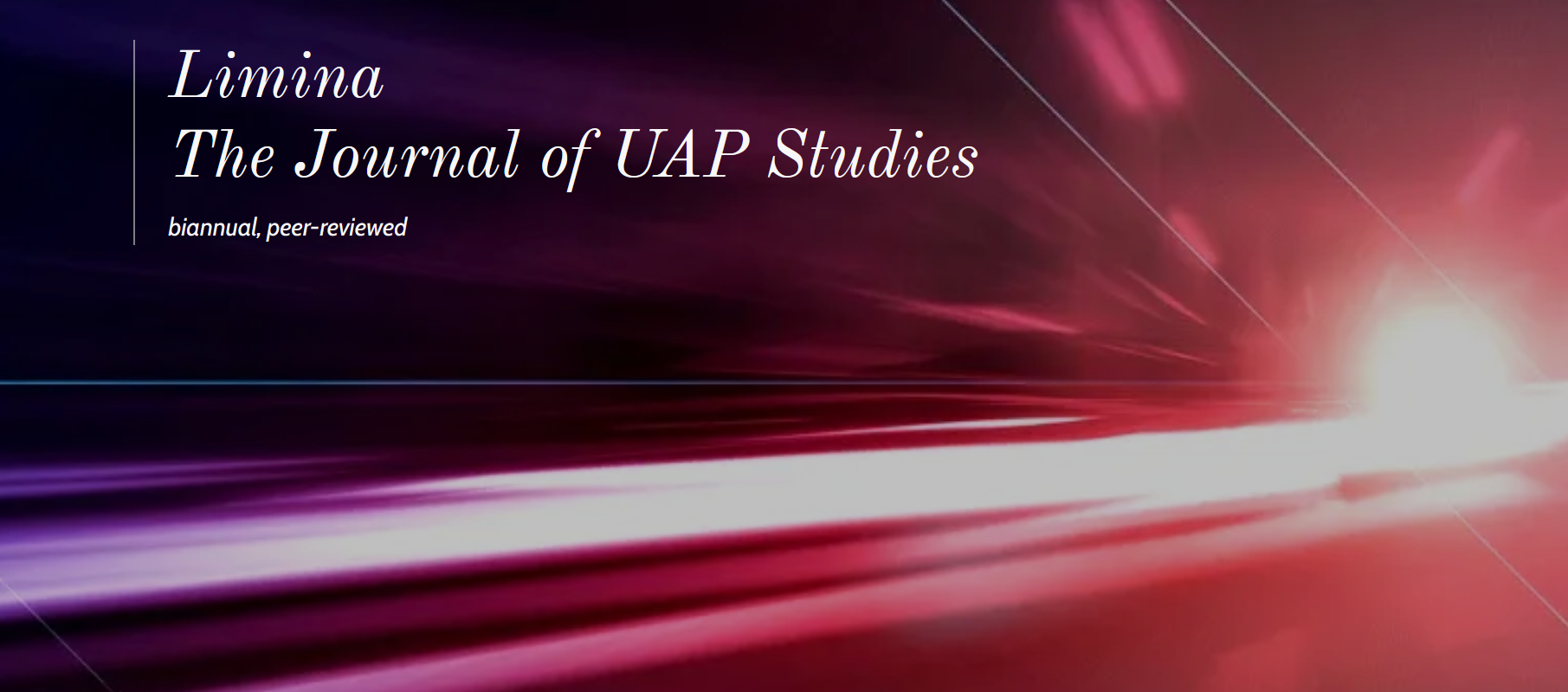In February 2024, the much-anticipated journal of the Society for UAP Studies (SUAPS), Limina, finally emerged into existence. The editorial board includes a lot of names more or less distant from the classical Ufology field, probably compiled in such a manner that the journal offers a multi-disciplinary UAP approach to its audience. The journal aims to fill the communication void observed in the scientific community engaged in UAP research.
Personally, I am not very fond of the new terminology (i.e. UAP), but I partially agree with Limina editor in chief Dr. Michael Cifone that “adopting the broader term “UAP Studies” as part of Limina’s name, reflects a fundamental shift in academic-scholarly outlook on the core phenomena it examines: It shows a purposeful reorientation and refocus a decisive move away from older attempts to find a place for the study of these enigmatic phenomena in modern academia. Calling the study of these phenomena “ufology”, for example, and thereby attempting to conceive of it as some sort of a scientific discipline (which is what the suffix “ology” signals), was both premature and unnecessary”. These statements call for rather long debates which are not the topic of this presentation. My personal understanding is that the core idea behind Limina’s editor is that the journal has to move away from the 70 years of social and cultural ufological “stains”.
SUAPS tries to enclothe the UAP phenomenon with a more technical approach, to underline the scientific and serious attempt to understand what we have been observing for so many years. As a scientist I approve this approach, but I am afraid that translating everything into technical variables will not give us the necessary tools to decode the challenging information we are exposed to. Somehow, we are forgetting the human factor (i.e. the observer) and hopefully Limina will cover this aspect in due time.

The first Limina issue includes an additional editorial by Mark Rodeghier (president of the Center of UFO Studies); an excellent overview by Philippe Ailleris on the challenging issue of current technological UAP research; a classic methodology-guide approach by Dr. Danny Ammon; an interesting approach of UAP research by Dr. Massimo Teodorani using tools from current Astrophysics & Geomagnetic developments; a review of Michael Bohlander’s book “Contact with Extraterrestrial Intelligence and Human Law” by Dr. Michael Uhall. Although the book topic is aligned with the aims of Limina, its inclusion in the first issue is rather unnecessary, considering the vastness of topics to be covered. The last contribution to the volume is by Andreas Muller on the German scientist Wilhelm Schickard’s famous UFO observation which made him the first academic UFO-witness.
As a scientific journal editor myself, I recognize that the first published issue is the most difficult task, especially in a field (i.e. UFOlogy or UAPology) which is not defined by any means and needs proper territory mapping. Hopefully with the proper guidance of the Limina editorial board this mapping will be concluded very soon.

